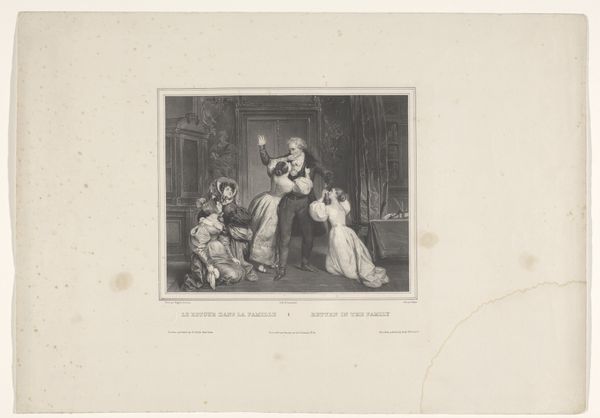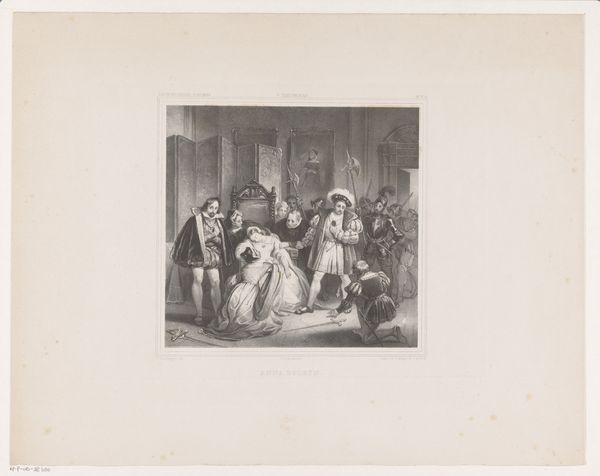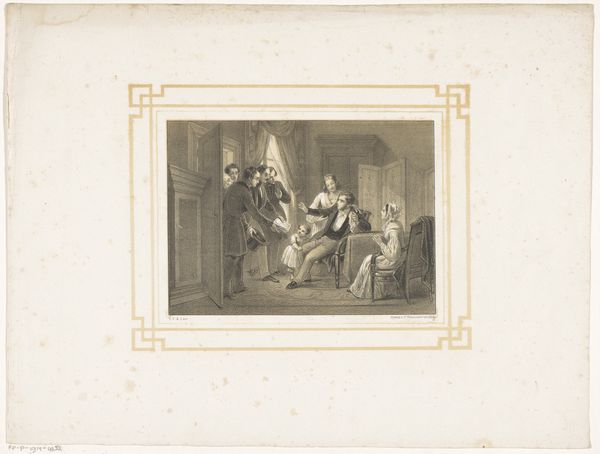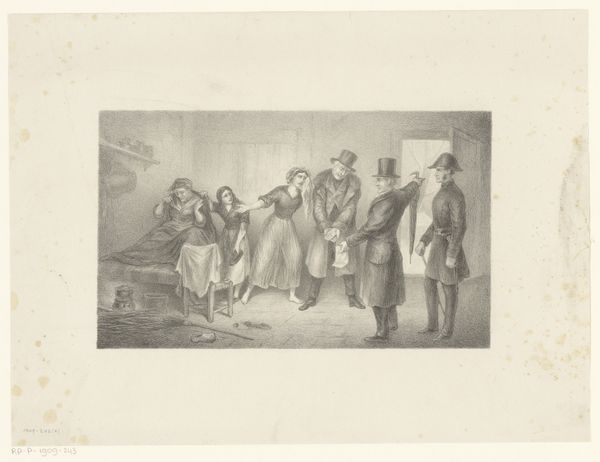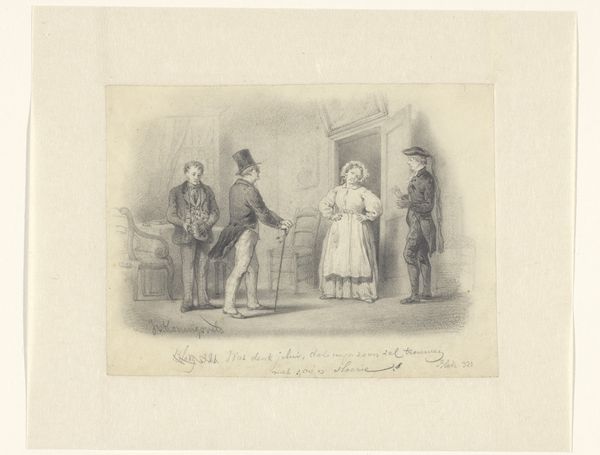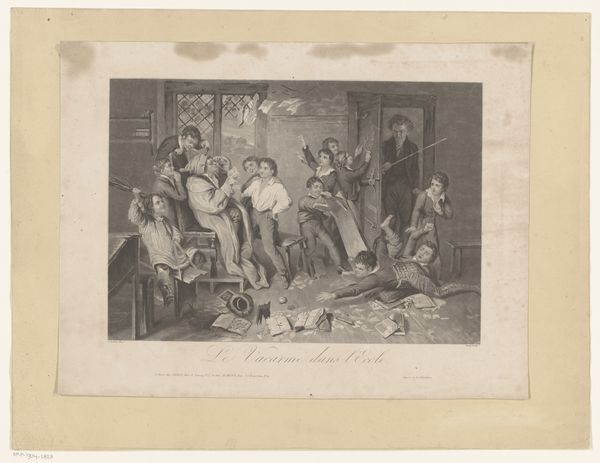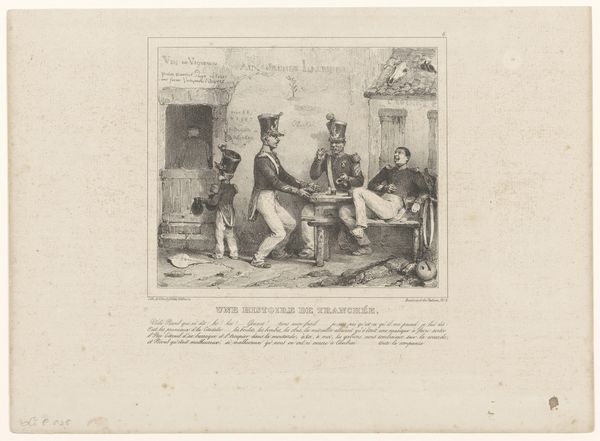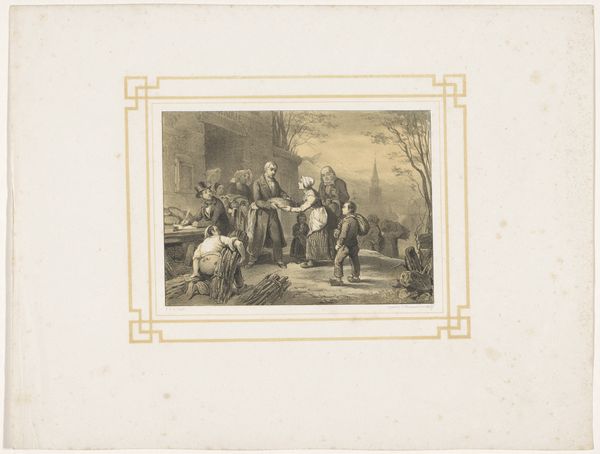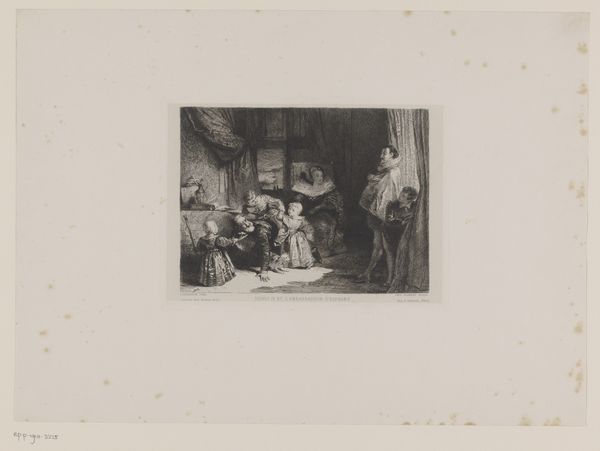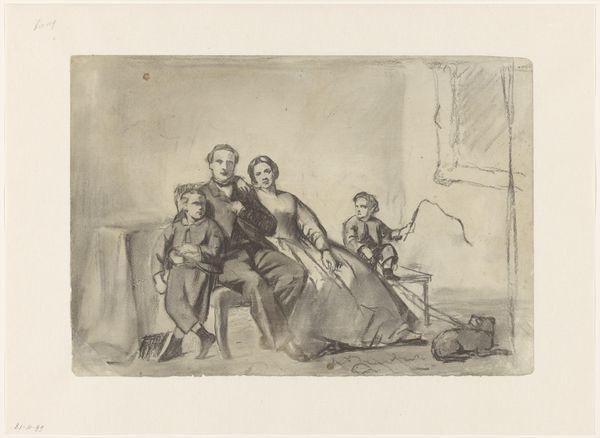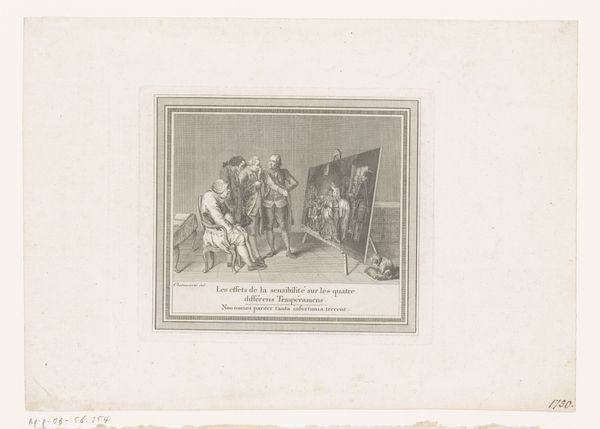
Drie figuren in een 18de-eeuws interieur c. 1847 - 1863
0:00
0:00
hermanfrederikcareltenkate
Rijksmuseum
drawing, print, paper, engraving
#
portrait
#
drawing
# print
#
paper
#
intimism
#
genre-painting
#
history-painting
#
engraving
Dimensions: height 310 mm, width 460 mm
Copyright: Rijks Museum: Open Domain
Curator: Herman Frederik Carel ten Kate, around 1847 to 1863, created "Three Figures in an 18th-Century Interior." It’s an engraving on paper, currently held at the Rijksmuseum. Editor: My initial response is of constrained relationships. Despite the elaborate interior, there is a noticeable formality between the figures. Curator: The engraving illustrates a domestic scene, reflecting the artist's interest in genre and historical painting. Examining it through a feminist lens, it prompts questions about the power dynamics represented here, right? Editor: Absolutely. The iconography supports that reading. The elder woman, centrally placed, dominates the seated younger woman, while the man stands, perhaps ready to depart, a symbol of patriarchal authority entering or exiting their space. Curator: I agree. Ten Kate positions them within this very constructed space, emphasizing their roles. Notice the man’s exaggerated gesture, almost like a performer displaying himself before an audience of women whose futures likely depend on this encounter. Editor: And consider the objects within the room, carefully rendered – the floral arrangement, the ornamental table, they amplify the mood, subtly signaling decorum and perhaps a latent desire for beauty and order amid unspoken tensions. Curator: The scene hints at negotiation or expectation, but for whom are these conventions performed, and at what cost, especially considering the limited agency historically afforded to women of this class? Editor: It makes me reflect on how interior spaces become stages for societal expectations. How we adorn them and move within them reflect broader cultural narratives of that time, persisting still today. The symbolism inherent here remains relevant to understanding our present reality. Curator: This close reading certainly provides insights. Understanding not only how such scenes reflect but also shape historical and contemporary understanding of gender and class structures. Editor: Agreed. This print acts as a lens, reminding us to question the images we see and the messages they perpetuate, and also the historical burdens visual languages carry within societies over time.
Comments
No comments
Be the first to comment and join the conversation on the ultimate creative platform.
